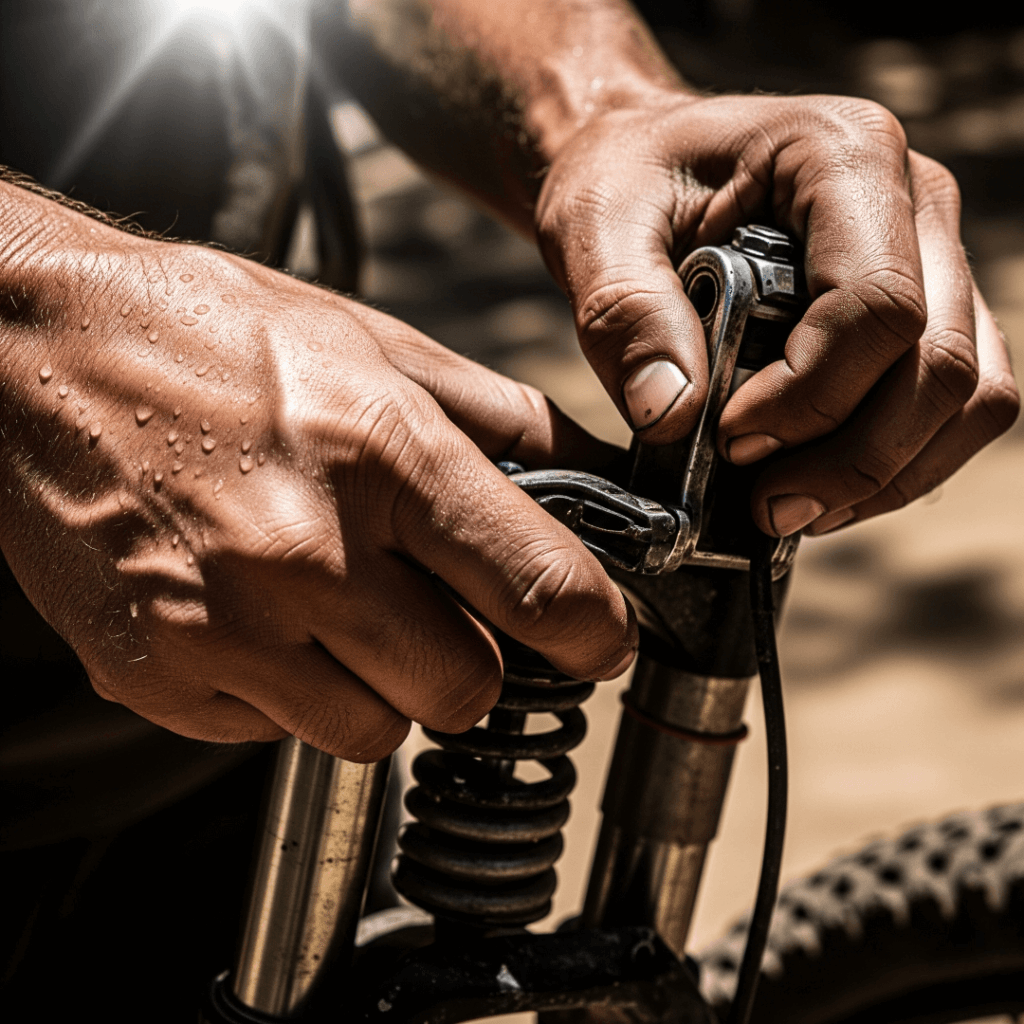Fine-tuning my motorcycle’s engine and suspension is, like, my whole deal right now, hunched over in this sweaty garage in India, where the air’s thick with petrol fumes and the faint whiff of street-side pakoras. I’m an American, totally out of my element, with a fan that barely works and grease smudged on my forehead like some badge of honor. I’ve been messing with my bike for weeks, trying to get the engine to growl just right and a suspension that doesn’t jar my spine on these insane, pothole-crazy roads. Man, I’ve botched it so many times—spilled oil, stripped screws, the works. I’m no pro, just a guy with a wrench and too much enthusiasm, spilling my guts here, mistakes and all.

Why I’m Hooked on Fine-Tuning My Motorcycle’s Engine
Fine-tuning a motorcycle engine is like chasing a high—it’s gotta feel alive under you. Back in the States, I’d tinker in a buddy’s fancy garage, but here? It’s me, a wobbly stool, and a stray cat glaring at me like I owe it money. My first go at the carburetor was a total trainwreck—flooded the engine, and the garage stank like a gas pump for days. The neighbor’s kid saw the whole thing and giggled, which, ouch, my pride. Here’s what I’ve pieced together, though:
- Air-fuel mix is everything: Too lean, and the engine’s coughing like it’s got the flu. I tweak the idle screw with a screwdriver, ear cocked for that sweet hum. Check this carb tuning guide for more.
- Filters hate India’s dust: A clogged air filter kills the vibe. I learned to clean mine after my bike started choking worse than me trying to eat spicy pani puri.
- Spark plugs, don’t skip ‘em: Ignored mine once, and the bike sounded like it was hacking up a lung. New plugs, gapped right, made it sing.
I’ll never forget the first time I got the engine dialed in. Took it out near Udaipur, and the bike just roared—felt like I was flying. Pure bliss, dude.
Getting That Suspension Just Right for India’s Wild Roads
Fine-tuning the motorcycle’s suspension is where I’ve eaten dirt, figuratively and literally. Indian roads are nuts—potholes big enough to swallow a tire, gravel everywhere, and don’t get me started on the cows. First ride here, I hit a bump so hard I thought my fillings would pop out. Swore I’d quit, but nah, I’m too stubborn. So I dove into suspension tweaks, and it’s been a sweaty, swear-filled ride.

My Suspension Fails and Fixes Tune Motorcycle Performance
Suspension’s gotta match you—your weight, your riding style, the road’s mood. I’m a big guy, ride like I’m late for a train, and India’s roads laugh at stock settings. Here’s what I’ve fumbled through:
- Preload’s your starting point: I cranked the rear shock preload to stop bottoming out. First try, I went too hard, and the bike felt like a rock. Whoops.
- Damping’s tricky: Compression and rebound need balance. Set it too stiff once, and it was like riding a pogo stick. This suspension guide saved my butt.
- Test it, like, a lot: Every tweak needs a spin. I dodge rickshaws and street dogs on short loops, feeling for changes. It’s chaotic but fun.
Once, I thought I had it perfect, but then I hit a pothole and nearly launched into the next village. A chaiwallah saw it and cracked up—had to laugh with him, even if I wanted to hide.
Tools I Can’t Live Without (and Some I Wasted Cash On)
Fine-tuning a motorcycle’s engine and suspension ain’t cheap, and I’ve blown way too much on shiny tools I didn’t need. Picture me, surrounded by a pile of wrenches, realizing I only needed, like, three. My go-to kit now:
- A torque wrench—don’t skimp, my first one was junk and I stripped a bolt. Not fun.
- Screwdrivers for carb tweaks, plus a feeler gauge for valves. Basic but clutch.
- A notebook to jot settings—trust me, I forgot once and had to start over.
Pro tip: Keep a rag nearby. I learned this after getting oil on my only clean shirt. My wife still brings it up, like, every day.

Screw-Ups I Made So You Don’t Tune Motorcycle Performance
Fine-tuning a motorcycle engine and suspension is all about screwing up and learning. I once forgot to tighten a suspension bolt—halfway through a ride, the bike wobbled like it was drunk. Another time, I mixed up the fuel screws and turned my bike into a smoke machine. Locals thought it was a riot, but I was dying inside. Take it slow, check your work, and don’t be too proud to ask for help. The folks on X’s motorcycle community have saved my bacon more than once.
Wrapping Up This Greasy, Crazy Ride Tune Motorcycle Performance
Fine-tuning my motorcycle’s engine and suspension has been a wild, messy adventure. I’m no guru—just a sweaty American in India, learning as I go, with grease under my nails and a bike that’s finally starting to feel like mine. If you’re out there tweaking your ride, get dirty, make mistakes, and enjoy the process. Got a tuning tip or a hilarious fail? Hit me up on X—I’m all ears!





